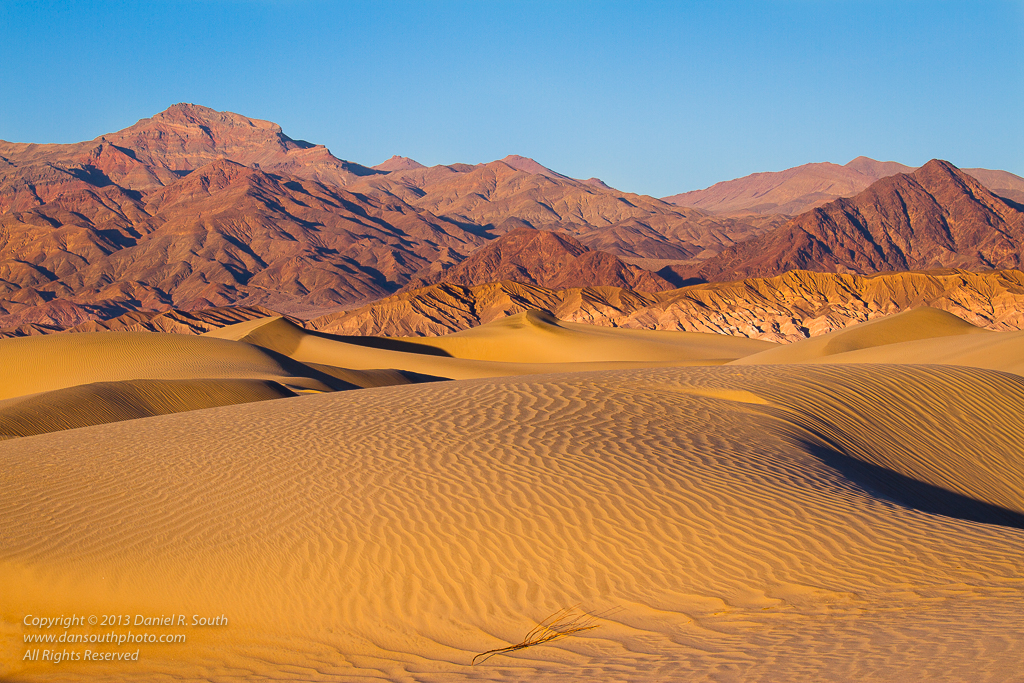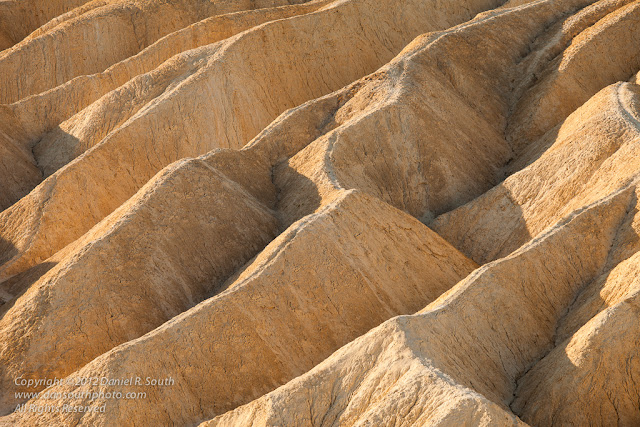I made my first trip to Death Valley on a clear day in June when the temperature hit 122 F. I had recently become a photography enthusiast and wanted to capture some images of this majestic wilderness.
In extreme temperatures, however, one shouldn't venture too far from the car. I made an attempt to hike to the Mesquite dunes but turned back quickly due to concerns over dehydration and heat exhaustion. For the rest of the day, I stayed close to the car.
I exposed the most memorable image of the day as sunset approached. I pulled the car off to the side of a stretch of roadway that had been freshly paved with deep black asphalt and painted with bright yellow lines. I mounted a 24mm lens on my trust Nikon F100 - yes, a film camera - and had my travel companion watch for cars approaching from behind me.
Of the handful of shots that I snapped, one of them turned out particularly well. I had several copies of it printed; a few of my friends still have that image hanging in their homes.
Returning to Death Valley some years later, I wanted to capture a similar image with the help of a tilt-shift lens. The tilt feature on this special-purpose lens enables focus to be repositioned from a vertical plane (typical for most cameras) to a ground-hugging plane that extends infinitely off into the distance. When the lens is adjusted correctly - which is a bit tricky - focus will be sharp on both the foreground features in the frame (e.g. the yellow lines and pavement near my feet) and distant objects as well (mountains, sky, brush, distant lines on the roadway).
The stretch of highway that I had photographed years earlier was now gray and worn, but I found another location that appealed to my eyes. The surface was in good condition, it had been painted recently, and it stretched straight off into the distance where the last light of sunset was still visible.
I was set except for one major complication. On this trip, I didn't have a travel companion. I had to rely on my ears and frequent glances behind me to keep from getting run over while focusing my camera in the middle of a highway. (Luckily, no one was drag racing through the valley that evening.)
As I mentioned before, focusing a tilt-shift lens can be tricky, and it becomes increasingly more difficult as the light fades. It's a manual process, but you have to focus for the near and far objects separately. By adding a small amount of tilt, typically only a degree or two, you can reach a point where both near and far objects are sharp. It's very each to add too much tilt, however, which messes everything up.
The process typically takes a few minutes even for skilled photographers - and even when you're not in mortal danger of being struck by a fast-moving automobile. Luckily, I had a lot of experience with my tilt-shift setup, so I was able to acquire the proper focus fairly quickly - while looking over my shoulder every ten seconds or so.
Please don't attempt a shot like this without spotters. Even if you have someone - hopefully more than one person - watching your back, this kind of shot is risky to say the least. Just because I got away with it doesn't mean that it was a good idea.
You'll think about it. It's tempting. My advice is to think about the future as you relax and enjoy the sunset a safe distance from traffic.
Camera: Canon EOS 5D Mark II
Lens: Canon TS-E 24mm f/3.5L II
Wishing you great light and meaningful moments!
Copyright 2017 Daniel R. South
All Rights Reserved















